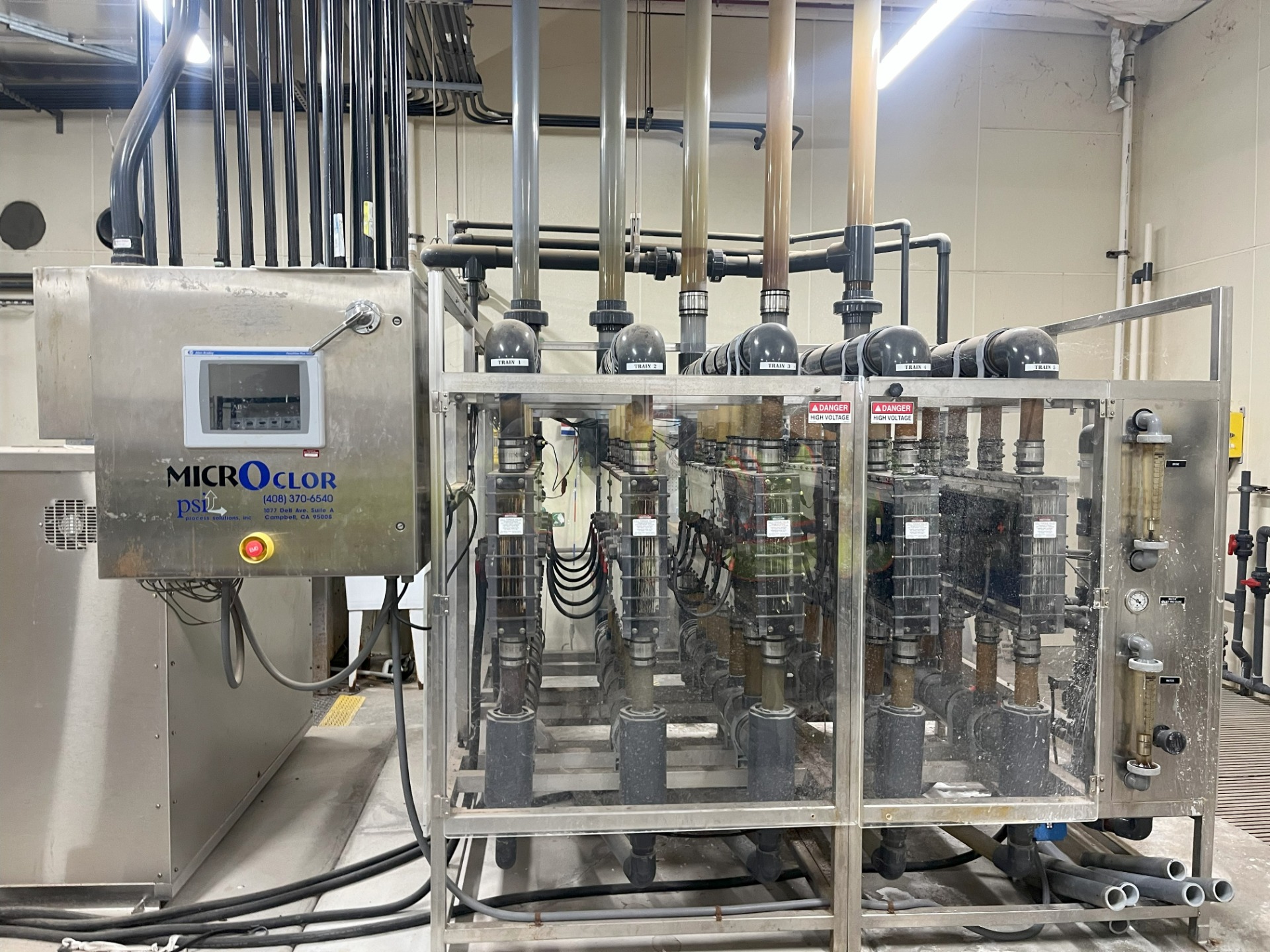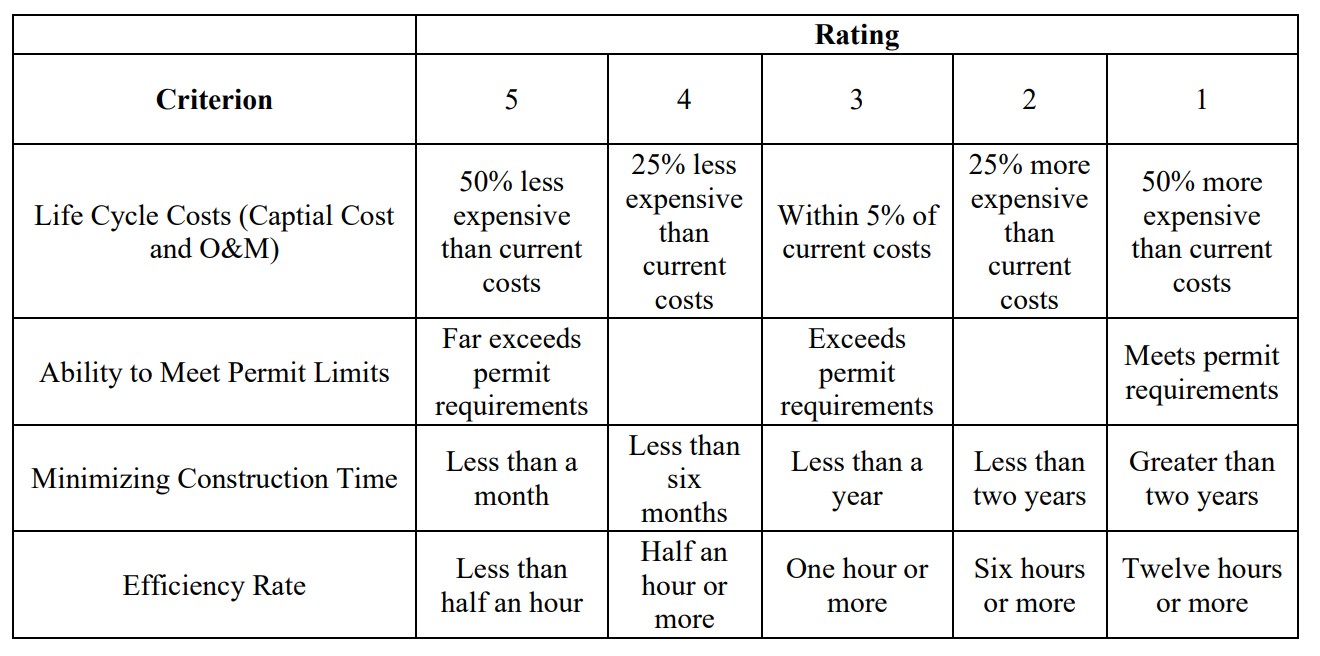Image by: Andrew Shipley
The purpose of disinfection is to eliminate all pathogens that are still in the process stream after advanced treatment. Elimination of these pathogens prevents outbreak of disease.
Existing equipment used for disinfection includes an on-site sodium hypochlorite generation system and two chlorine contact basins. The sodium hypochlorite generation system from MicroClor utilizes high salinity water and an electrical current to facilitate electrolysis. During electrolysis salt in the water is ionized to produce sodium hypochlorite.

Image by: WCWW
Three different alternatives were considered for disinfection treatment: no change to existing equipment, ultraviolet (UV) disinfection, and ozone disinfection. UV disinfection shoots high intensity short wavelength radiation through the water stream to eliminate pathogens. Ozone disinfection injects ozone gas into the water stream where the ozone particles oxidize with the pathogens thus eliminating them. After analysis it was discovered that the capital costs for UV and ozone disinfection are high. Additionally, existing systems are highly sophisticated and efficient. To add, sodium hypochlorite is a relatively safe chemical to handle in the realm of chlorine disinfection.
Each alternative was scored 1-5 (1 being the worst and 5 being the best) based on how well they met each criterion. A summary of how each criteria was scored can be found in the following table.

The four grading criteria used for disinfection selection were life cycle costs, ability to meet permit limits, minimizing construction time, and contact time. Life cycle costs were weighted the highest because existing equipment is already highly efficient. Meaning for a significant change to be made it had to be cost effective.

In the end, it was decided to make no changes to existing equipment. Knowing that sodium hypochlorite generation could be scaled up for an increase in design capacity. Additionally both contact basins have enough volume to meet a 6-hour minimum contact time with the new design capacity of 16.3 MGD.
